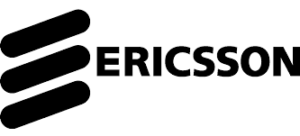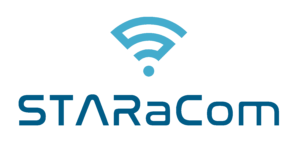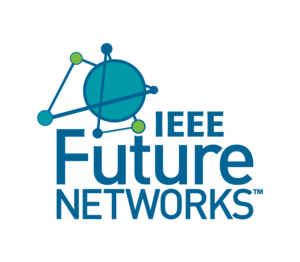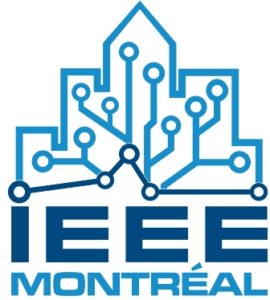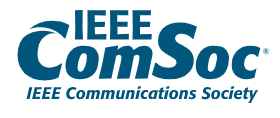SCOPE
Web-enabled smart devices that comprises of tiny gadgets using embedded systems like processors, communication gear (gathering, transmitting and elaborating environmental data), sensors are controlled by “The internet of things” (IoT). These devices are comprised of lightweight, scalable, energy-efficient storage nodes. Evident from the preceding reason, energy harvesting is essential for enhancing the effectiveness and durability of IoT devices. Devices may be randomly deployed and exposed to harsh, extreme environments. Consequently, it is claimed that energy harvesting technology permits devices to collect energy from ambient sources and recharge their batteries. Power management integrated circuits (PMICs), which increase the system’s lifespan, are essential for reducing the power consumption of the batteries. Ideally, the lifetime of the network should be as long as possible. Hence, the energy economy and lifetime of the battery are crucial for developing and designing wireless sensors (IoT devices). Despite revolutionary developments in operating systems, communication protocols, and the implementation of commanding power management algorithms, extremely effective MAC (medium access control) and routing protocols, batteries still have finite capacity and will eventually run out of power. In order to guarantee the network’s functionality, costly battery replacement maintenance operations must be performed. Due to the magnitude of wireless sensing networks and the position of the sensors, which are typically in difficult-to-reach locations, these maintenance tasks are frequently problematic. In addition to providing power for a limited amount of time, batteries are not an ideal power source for wireless devices. These include reduced energy efficiencies and leakage, which drains the charge of the battery even when it is not in use. In addition, the impact of temperature on a battery’s capability to perform, with extreme temperatures producing capacity and power losses, restricts the spectrum of battery applications.
As in earlier days, wireless sensors were typically driven by batteries, which, despite enabling for minimal system costs altogether, had a detrimental effect on the life and efficiency of the entire system in which they were used. The battery life is one of the primary hurdles to deploying wireless sensor networks. Energy Harvesting (EH) technology is a feasible, eco-friendly solution methodology that, in certain circumstances, completely replaces the requirement for batteries while prolonging the duration of these sensor. It ensures most cost-effective use of resources with lower network maintenance costs that deliver economic and practical benefits of energy harvesting.
Due to the rapid expansion of the Internet of Things (IoT), there is a heightened interest in developing low-power wireless sensors. Modern Internet of Things (IoT) systems incorporate wireless sensors to gather data in a trustworthy and useful way to monitor processes and manage operations in sectors like transportation, renewable energy, civil infrastructure, smart buildings manufacturing, environment condition monitoring, healthcare, defense, and manufacturing. When these IoT devices are designed and implemented, they must consider their long-term and selfsustaining activities from the outset. Multiple sources of energy can be considered for energy harvesting. These sources can be divided into five categories: organic, hybrid, mechanical, and human. Ambient energy sources are easily accessible and cost-free in the environment. These auditory sources can be categorized into various groups. Considered as some of the most recent are energy sources based on the solar energy, radio frequency, thermal energy, wind energy, and hydro-based energy sources. Furthermore, future research directions in the following areas can be considered as the most emerging.
The topical and vertical summit on Energy Harvesting for energy efficiency in the Internet of Things aims to bring together academics, practitioners, and researchers with the purpose of exchanging experiences and presenting discoveries on energy efficiency in IOT based devices. Renewable energy sources will dominate the panel discussions and presentation sessions that also include power management integrated circuits, self-powered Internet of Things power generation, battery technology, etc.
ORGANIZERS

Sandipan Mallik completed his PhD from Jadavpur University Kolkata India, and currently serving as an Associate Professor in Department of Electronics and Communication Engineering, at NIST Institute of Science and Technology, Berhampur, Odisha, India. He has more than 10 years of teaching and research experience. His research is thin film deposition technology, high-k dielectrics, MOS device physics, photovoltaic, IoT sensors, transient electronics, proteotronics devices, bio-medical devices development, etc. He has published more than 80 research articles in reputed journals and conferences including six Indian Patents. He is also an investigator of a sponsored project and a couple of startup projects.

K. Hemant Kumar Reddy was born in Berhampur, India. He received his M.Tech and PhD. and from Berhampur University, BhanjaVihar, India. He is currently with the VIT AP University Andhra Pradesh, India, as an Associate Professor Grade-II. Currently serving as an Associate EditorJournal of Intelligent Fuzzy System (JIFS). He has published several papers in High-Quality SCI/SCIE/ESCI Impact Factor Journals cum Scopus/ESCI indexed Journals, 25+ Papers in International Conferences indexed with ACM, Springer, IEEE Xplore. His current research interests include distributed and cloud computing, fog computing, IoT, Edge, Fog computing, and service-oriented architectures.
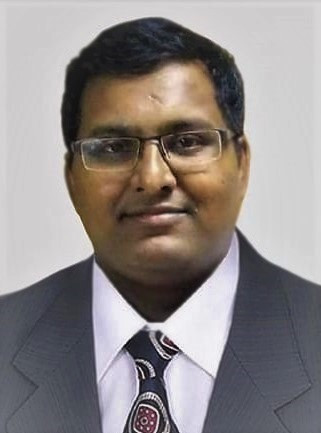
Rahul Roy is currently working as Assistant Professor in Department of technology at GITAM University, Hyderabad. He has also worked in Department of CSE at NIST Berhampur. He works as research scholar in Indian statistical Institute into three different projects. He received his M. Tech Degree in Computer Science and Engineering from Kalinga Institute of Industrial Technology, Bhubaneswar and M.Sc in Computer Science from Assam University, Silchar. He has 13 scholarly articles in reputed journal and conferences. His research interest includes nature inspired computing, neural learning, machine learning, natural language processing, and internet of things.
PANELIST
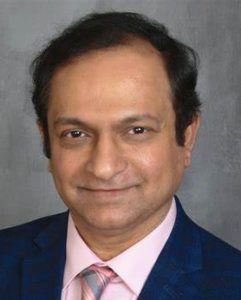
Asutosh Dutta is an IEEE Fellow, Chief 5G Strategist, Founding Co-Chair IEEE 5G and Beyond Initiative. He is IEEE Communications Society Distinguished Lecturer, ACMDistinguished Speaker and Accomplished technical and computer science expert with 30 years of experience directing multiple IT operations, research and development for leading global technology corporations and top universities. Prof. Dutta is seasonedMobility and Security Architect, Chief Technology Officer, Senior Scientist and project manager with in-depth expertise in developing and implementing research, analysis, and design initiatives. He has expertise in computer communication, wireless networking, LTE networks, Network Function Virtualization (NFV), and mobility management. Author of 31 issued patents and 90 publications. Editor-in-chief for Journal of Cybersecurity and Mobility published by River Publishers.
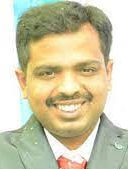
Sibarama Panigrahi completed his M.Tech and Ph.D. in Computer Science and Engineering from Veer Surendra Sai University of Technology, Odisha, India. He is presently working as an Assistant Professor in the Department of Computer Science Engineering at Sambalpur University Institute of Information Technology, Odisha, India. He has been Sanctioned with Four research grants from major funding agencies of India like Science and Engineering Research Board (SERB), Indian Council of Medical Research (ICMR), Odisha State Higher Education Council (OSHEC) and Sambalpur University. Recently, He has developed and deployed an electricity load forecasting software employing deep learning models for India’s one of the major Power Distribution Company Tata Power Western Odisha Distribution Limited (TPWODL) through his research project sponsored by OSHEC. He has published more than 30 research papers in reputed Journals and Conferences. He has served as a reviewer of more than 30 reputed international Journals and Conferences. His research interest includes Machine Learning, Deep Learning and Time Series Forecasting. He is a senior member of IEEE and active member of many other professional bodies.

Shikhar Verma received the M.Sc. and Ph.D. degrees from the Graduate School of Information Sciences (GSIS), Tohoku University, Sendai, Japan, in 2018 and 2021, respectively. Since 2021, he has been a Research Assistant Professor with GSIS, Tohoku University. His research interests include the Internet of Things, physical and data link layer of 5G and beyond 5G (6G) networks, network slicing, and wireless communication security. He is also a recipient of two Japan Society for the Promotion of Science (JSPS) research grants. Additionally, he has also been awarded the excellent researcher award for young faculty-2022, the excellent thesis award from the Dean of the GSIS, Tohoku University in 2021, and received Best Paper Awards at IEEE International Conference on Communications (ICC) in 2018, Student Paper Award at IEEE Vehicular Technology Conference (VTC), 2020. He has publications in high-impact journals such as IEEE Communication Surveys and Tutorials, and IEEE Internet of Things. He has also published in top conferences such as IEEE Globecom, IEEE ICC, and IEEE VTC.
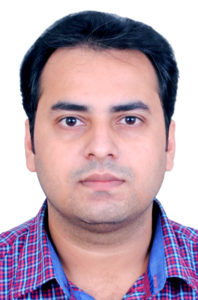
Soumen Moulik (Member, IEEE) received the Ph.D. degree from the Indian Institute of Technology Kharagpur, India. During his Ph.D., he has made significant contributions on the topic of QoS provisioning in Wireless Body Area Networks based on severity of physiological parameters. He is currently an Assistant Professor with the Department of Computer Science and Engineering, National Institute of Technology (NIT) Meghalaya, India. His current research interests include performance improvement of communication in Wireless Body/Personal Area Networks (WBANs/WPANs), Wireless Sensor Networks, Internet-of-Things (IoT) in healthcare, and Artificial Intelligence (AI)–Machine Learning (ML) based analysis of bio-medical data, and e-Health application development.
Sign up for email alerts to get the latest news and announcements for the 2022 IEEE Future Networks World Forum. If you have specific questions, contact us at FNWF@ieee.org.






